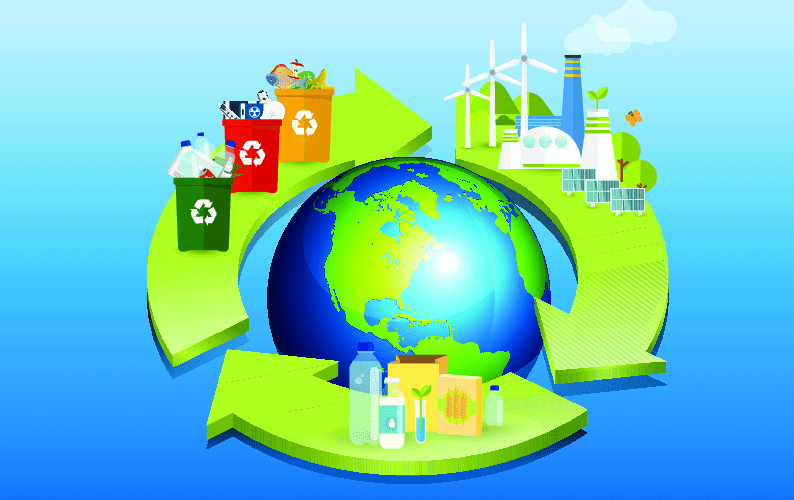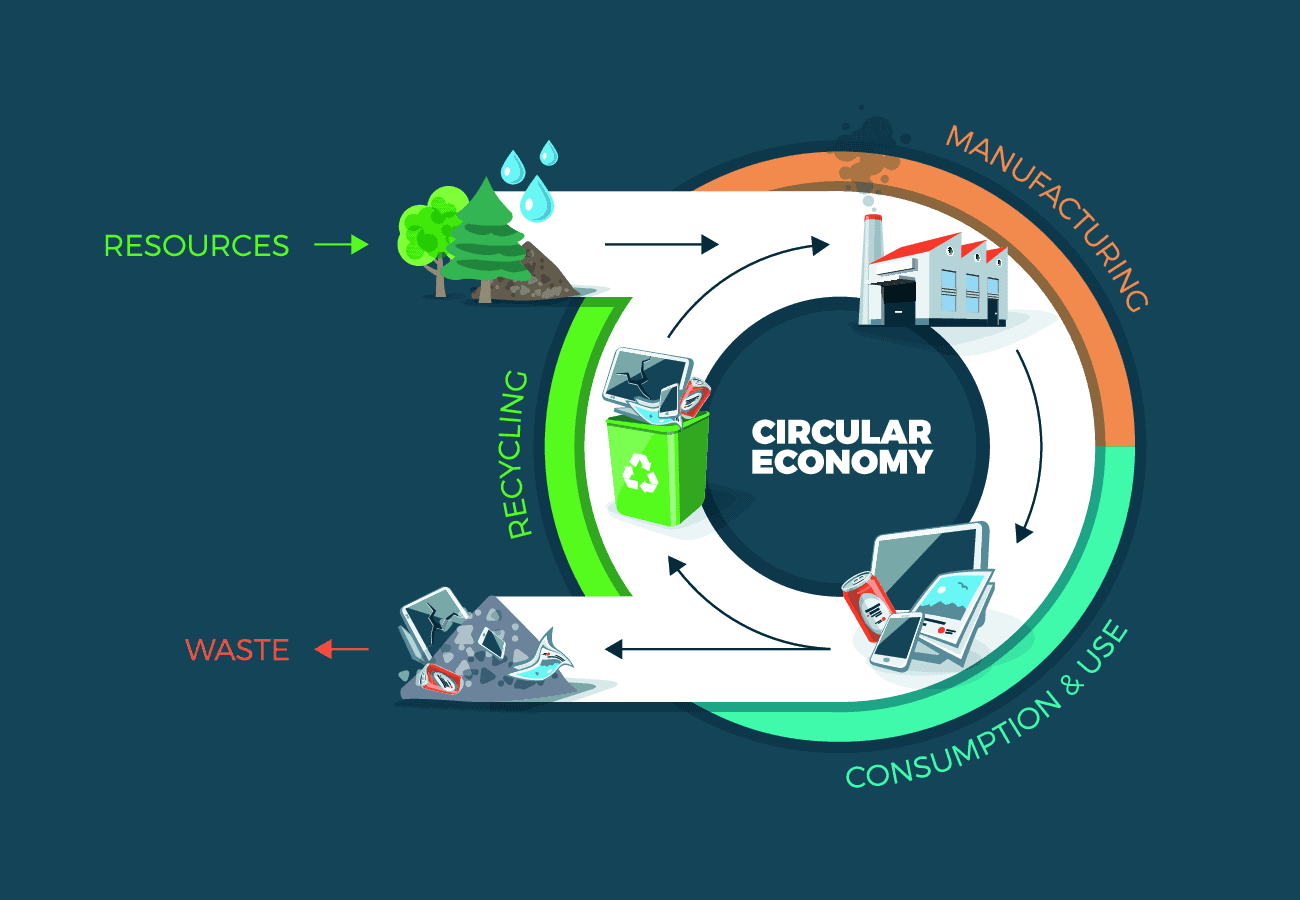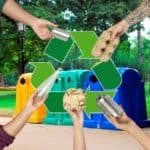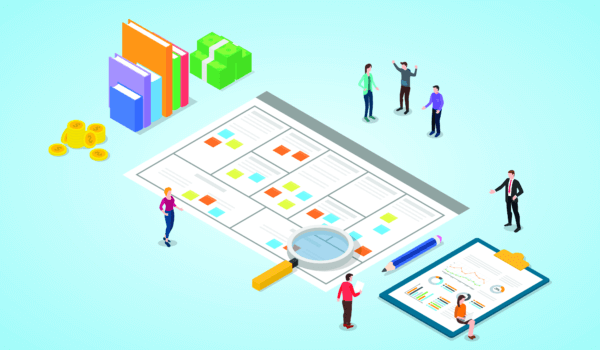A study indicates that a shift to a circular economy can reduce each nation’s greenhouse gas emissions by 70%, grow the workforce by 4%, and there will be a low-carbon economy.
The circular economy is an economy that uses a systems-focused approach and involves industrial processes and economic activities that are restorative or regenerative by design, enables resources used in such processes and activities to maintain their highest value for as long as possible, and aim for the elimination of waste through the superior design of materials, products, and systems (including business models).
The circular economy is a sustainable alternative to the linear economy. It turns goods at the end of their service life into resources for others and minimizes the waste. It pushes the production to more sufficiency, efficiency, reusable, recycle, repair, and remanufacture.
There are two groups regarding circular economy business models: 1) business models integrating and fostering reuse, repair, remanufacture, and upgrade in their operations, and 2) business models that turn old goods into new resources by recycling. This culture makes consumers become users and creators, while the labor market creates more skilled jobs.
Circular economy know-how knowledge is concentrated in big industries and small-medium enterprises. It is better to bring this topic into academic and vocational training areas. This will allow SMEs to hire graduates familiar with how to reshape business models toward a circular economy. The government, through its regulations, can assist the economy with green policies, taxation, promoting a circular economy, and attracting green investments. Scientists have the opportunity to increase research and development on this topic and implement new methods with innovation and sustainability.
Recovering Waste

The development of science has increased human lifespan and economic and population growth with an unfortunate increase in exploitation of resources and producing tons of waste that are creating environmental pollution and diseases. In such a context, we need to change our consumption and production to achieve a circular economy. Recovery and reuse of resources are vital to decreasing the consumption of raw materials, reducing waste, and improving energy efficiency.
For instance, the construction sector is one of the pioneer waste generations in the European Union, with approximately one billion tons of construction waste annually. This sector also contributes to a third of the annual EU greenhouse gas emissions. EU Action Plan for the circular economy has put the construction sector as a priority to shift this sector toward less CO2 and more efficiency. Through technological advancement, 3D printing in the construction sector is emerging and will be used on a large scale shortly. The concrete 3D printing market was projected to be 56.4 million by 2021. In 2019, BAM opened Europe’s first concrete printing center in the Netherlands. The company has already received several house and bridge construction projects. The future infrastructure with 3D printing will be more sustainable, scalable, and affordable with saving time.
Sustainable waste management within the circular economy is about minimizing landfill waste, lowering collection costs, maximizing its value back to the market, and creating jobs. There is a need for commercial market and collection points for supply (manufacturer) and demand (users) to take back, bring back, or buy back discarded garments, bottles, computers, furniture, etc.
Goods that can be reused may be cleaned and re-marketed, recyclables are dismantled, and the parts are classified according to their residual value. Worn parts are sold for remanufacturing, and broken ones for recycling.
Austria is a world leader in this area. Collecting and reusing waste is labor-intensive and expensive, but they have been fostered by reforming taxation and new marketing strategies. The Brussels-based company Umicore extracts gold and copper from electronic waste. The Swiss firm Batrec removes zinc and ferromanganese from batteries. These processes are energy-intensive and recover the metals only partly. To close the recovery loop, we will need new technologies to recover metals fully.
There is a need for further research and innovation to make a circular economy applicable to all countries according to their climate and context. Resourcing systems, business models, supply and value chain, and human capital need further development to adapt smoothly to a circular economy. Existing or ongoing externalities for sustainable operations of business models need to be identified and removed from getting into the circular economy.
Illustration: petovarga/Shutterstock
You might also like:
Support us!
All your donations will be used to pay the magazine’s journalists and to support the ongoing costs of maintaining the site.
Share this post
Interested in co-operating with us?
We are open to co-operation from writers and businesses alike. You can reach us on our email at [email protected]/[email protected] and we will get back to you as quick as we can.










